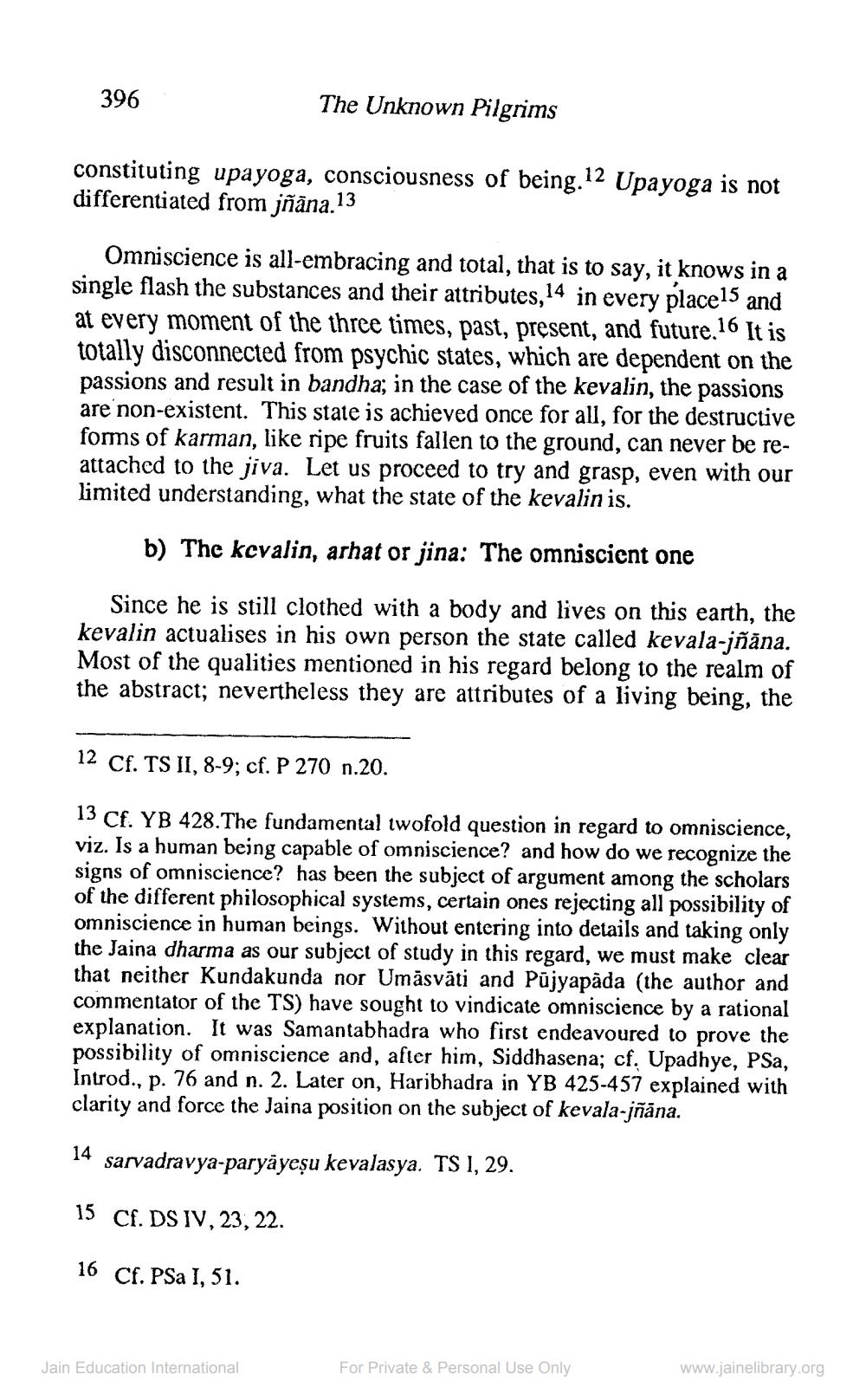________________
396
The Unknown Pilgrims
constituting upayoga, consciousness of being. 12 Upayoga is not differentiated from jñāna.13
Omniscience is all-embracing and total, that is to say, it knows in a single flash the substances and their attributes, 14 in every place15 and at every moment of the three times, past, present, and future. 16 It is totally disconnected from psychic states, which are dependent on the passions and result in bandha; in the case of the kevalin, the passions are non-existent. This state is achieved once for all, for the destructive forms of karman, like ripe fruits fallen to the ground, can never be reattached to the jiva. Let us proceed to try and grasp, even with our limited understanding, what the state of the kevalin is.
b) The kevalin, arhat or jina: The omniscient one
Since he is still clothed with a body and lives on this earth, the kevalin actualises in his own person the state called kevala-jñāna. Most of the qualities mentioned in his regard belong to the realm of the abstract; nevertheless they are attributes of a living being, the
12 Cf. TS II, 8-9; cf. P 270 n.20.
13 Cf. YB 428. The fundamental iwofold question in regard to omniscience, viz. Is a human being capable of omniscience? and how do we recognize the signs of omniscience? has been the subject of argument among the scholars of the different philosophical systems, certain ones rejecting all possibility of omniscience in human beings. Without entering into details and taking only the Jaina dharma as our subject of study in this regard, we must make clear that neither Kundakunda nor Umāsvāti and Pujyapada (the author and commentator of the TS) have sought to vindicate omniscience by a rational explanation. It was Samantabhadra who first endeavoured to prove the possibility of omniscience and, after him, Siddhasena; cf. Upadhye, PSa, Introd., p. 76 and n. 2. Later on, Haribhadra in YB 425-457 explained with clarity and force the Jaina position on the subject of kevala-jñāna.
14 sarvadravya-paryäyeșu kevalasya. TS 1, 29.
15 Cf. DS IV, 23, 22.
16 Cf. PSa I, 51.
For Private & Personal Use Only
Jain Education International
www.jainelibrary.org




